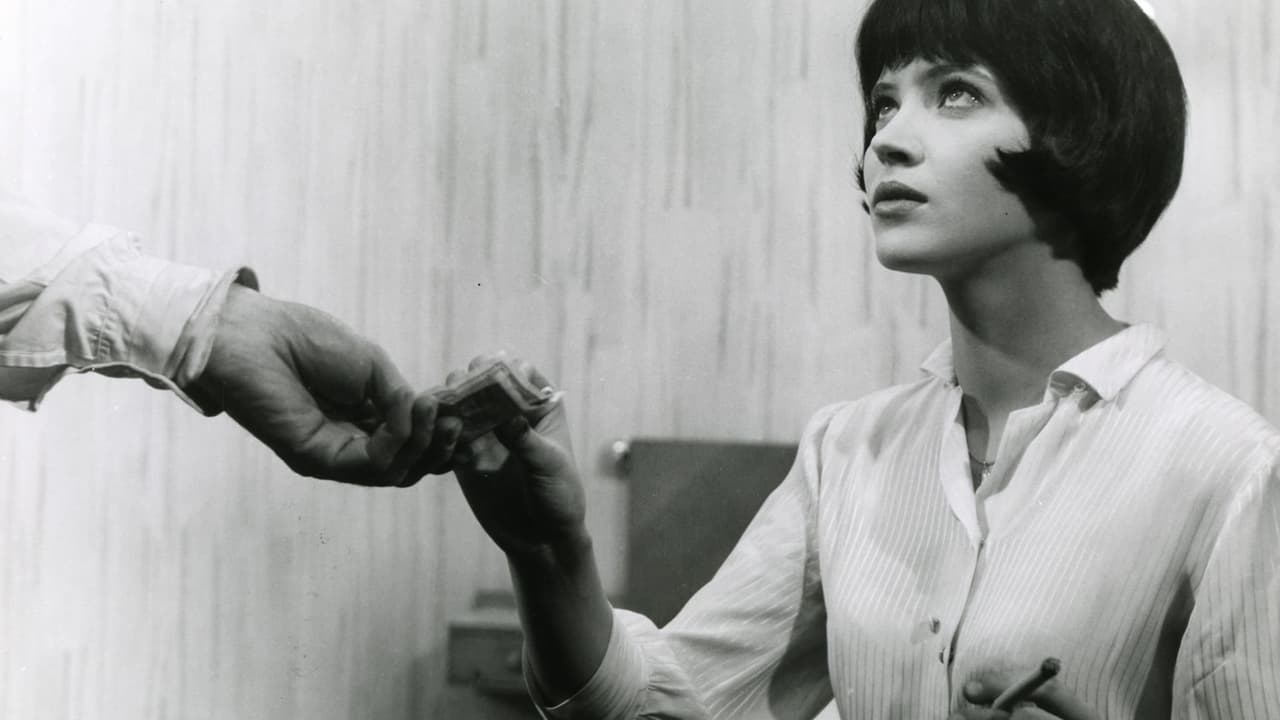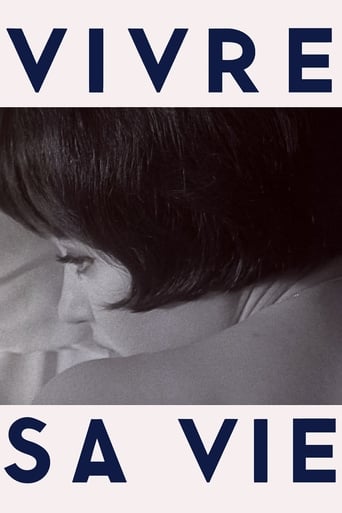

just watch it!
... View MoreWhat a freaking movie. So many twists and turns. Absolutely intense from start to finish.
... View MoreThe film makes a home in your brain and the only cure is to see it again.
... View MoreThe movie turns out to be a little better than the average. Starting from a romantic formula often seen in the cinema, it ends in the most predictable (and somewhat bland) way.
... View MoreIt took me until halfway through this pointless, dull film to figure out why Godard shot so many scenes with the camera pointed at the back of his actors' heads -- his lead actress couldn't act worth a d**n, and many of the males weren't much more convincing. Was there a single establishing shot in the entire film? The whole film seems to be shot 6 inches to 3 feet from the actors. So boring. What's the lead character's motivation? Boredom? Lack of imagination? Stupidity? Greed? I can watch Breathless over and over again. Maybe Godard just ran out of steam the more movies he made.
... View MoreMY LIFE TO LIVE is a drama about the degradation of a young life.A beautiful Parisian in her early twenties, leaves her husband and their son hoping to become an actress. She's a rebellious young woman who is prone to delusions. She elects to earn money as a prostitute. Soon she has a pimp, however, she meets an intelligent young man ...Mr. Godard has showed us the life of a young woman in the 12 short episodes. She has got a scar on her body or her soul in each of the episodes. A young person who is on the verge of despair, wants a better life. However, like most of the characters from the French New Wave, she is looking for something that is not precisely determined.The dialogues are direct and filled with dark tones. A depressive attitude is an expression of sincerity in this film. A technique and frames are quite strange. I had an impression that the protagonists flee from a camera in certain scenes. The story is intimate but not a quite tragic. Close-ups of the face of the major actress leave a strong impression of confusion and ignorance.Anna Karina as Nana Kleinfrankenheim is a lonely woman, who is lost in her own pathos and her inability to adapt to the real world. She is an outsider and every new experience strikes a blow to her self-confidence. In the end, she is cute and helpless thing who found meaning (love), for which she will not have time.This is very interesting, but not convincing.
... View Morewatching this movie of 1962 in 2016, one should interpret and asses the movie accordingly. this may contain Spoiler . At first the story seems to be an usual story of a girl pursuing a carrier in cinema while falling to the prostitution. To me it is an in-depth analysis of a woman's life. the prostitution as an occupation is the medium to make this analysis. the scene where they missed the movie and she has to wait her boss talking to one of his friend and because she gets bored and the friend of her boss childishly tries to cheer her up, she dance is so innocent and breathe-taking.
... View MoreNow who doesn't enjoy a healthy dose of French, 'Nouvelle Vague' existentialism on a rainy Sunday afternoon? Well, I must confess I was initially a little apprehensive about 'Vivre sa Vie', a twelve tableaux, New Wave film directed by Jean-Luc Godard. Not that I haven't immensely enjoyed many of his other works but the write up on the DVD made it sound far more inaccessible and 'out there' than it actually was. The use of tableaux helped tremendously with the flow and understanding and gave the movie the effect of being more like a play whilst providing a direct view into the mind's eye of the filmmaker.Vivre sa Vie is certainly less plot driven than character driven - but what do you expect? This is French New Wave people! Essentially one becomes immersed in the life and lifestyle, thoughts, feelings and attitudes of Nana Kleinfrankenheim (played excellently by Anna Karina); a young woman who has left an unhappy marriage, and her child, and is seeking more in life. Apparently Godard specifically chose Karina for his main character believing her lack of acting experience would contribute to her natural 'awkwardness; it did, and very effectively too. Nana is dissatisfied with her lot and aspires to become an actress as she works, with extreme indifference, in a low paid sales position. She finds herself without enough money to make ends meet and that is where her descent into a seedier, harder life begins. Throughout the movie, Nana's personality vacillates wildly between apathy, coquettishness, genuine sadness, sultriness, sheer awkwardness and hard-nosed conviction. I particularly enjoyed the tableaux where she meets an older man in a café and they start a conversation which leads to philosophical enquiry. Although Nana has no knowledge of the subject, her enquiries and questions lead to her philosophizing, albeit for a brief period of time. This is one of the rare scenes where Nana becomes genuinely animated and exuberant and one sees that she is truly an innocent, whose various 'masks' are just that; a way of appearing that she has her life together, knows what she's doing and doesn't care about the consequences.The cinematography and atmosphere of sa Vie is beautiful, brooding and captivating; some scenes consisting solely of the back of peoples' heads, their reflections in mirrors and their thoughts only spoken in their heads. If you fancy stepping back in time to 1960s Paris, where everyone is impeccably chic all the time, where people seemingly inhale more smoke than oxygen and where one can revel in a fiesta of ennui, seediness, desperation, innocence and stark realism - then you are going to love this movie!
... View More